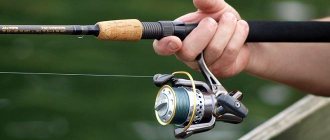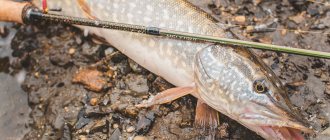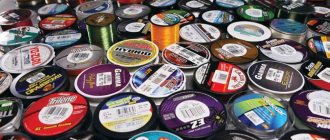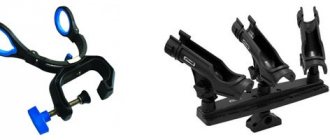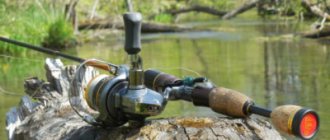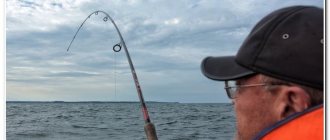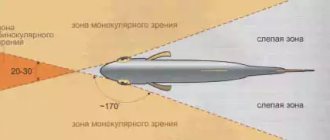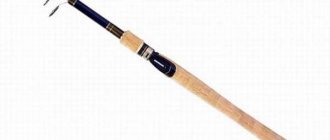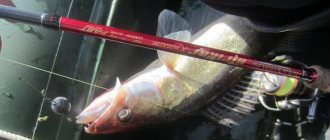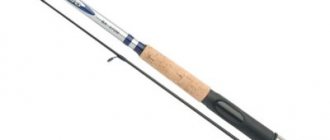Length.
For coastal fishing, where long casting is needed, a long spinning rod is required (from 2.3m to 3m).
This will allow you to cast the bait as far as possible. For fishing on small rivers and lakes, a long spinning rod is not needed; it simply won’t be convenient if you need to get through bushes and trees along the water. In such conditions, the length of the spinning rod usually does not exceed 2.3 meters.
If we are going to twitch wobblers, then the optimal length will be in the range from 1.8m to 2.13m. This is due to the specifics of fishing, a shorter and faster spinning rod, as practice has shown, it is much more convenient to twitch.
Choosing a spinning rod for a boat is a little easier. You shouldn’t take the shortest and longest; here you have to proceed from your preferences and experience.
Basic principles of labeling
Each modern fishing rod should have a corresponding marking applied to it, which, in abbreviated form, contains basic information about its manufacturer, length, test parameters, etc.
It should be taken into account that the vast majority of high-quality fishing rods presented on our market are foreign-made, and therefore the designations on spinning rods are written in English, in accordance with the standards accepted in the homeland of their manufacturer.
And although the marking of different companies producing forms may vary, everyone tries to adhere to similar standards in the structure of its application.
The test value of rods originally intended for the Russian market usually already have designations in grams. They look like two numbers separated by a hyphen and indicate the minimum and maximum weight of baits recommended for working with this form. For example: the test 10 – 30 grams (g) shows that this spinning rod is designed for fishing with baits weighing from 10 to 30 grams.
The generally accepted international designation of fishing rod power, depending on the class, has the following markings:
- UL (Ultra Light) are ultra-light (ultra light) whips with an upper dough limit of no more than 7 grams, or ¼ ounce (1/4 oz).
- L (Light). Light rods. They have a test with an upper limit of 14 grams (½ ounce).
- ML (Medium light). Medium easy class. Such spinning rods usually have a test of 4 – 21 grams (3/4 oz).
- M (Medium) are middle class rods that have a test with an upper limit of 28 grams, which is equal to 1 ounce (1 oz).
- MH (Medium Heavy). Medium-heavy class spinning rods. Typically, they have a dough of 10 to 42 grams, or 1.5 ounces (1.5 oz).
- H (Heavy). Heavy class rods designed to work with baits weighing more than 42 grams (usually up to 80 grams).
Also, some manufacturers produce spinning rods with an upper limit on the weight of baits up to 250 grams or more (6 oz, 9 oz). They are marked XH (Extra Heavy) and belong to the class of super-heavy rods.
It should be remembered that equipping the blank with a stronger fishing line can lead, in case of a snag, to its breakage, and equipping it with a less strong fishing line can lead to its frequent breakage and, consequently, to the loss of the bait.
Now let’s figure out how to determine the structure of a spinning rod by markings. Build is a characteristic that shows the nature of the bending of the spinning rod under the influence of load on it. It is usually determined when the tip of the form is fixed. Holding the handle, the whip is carefully moved in different directions and the degree of its bending in different parts is determined.
And here's what you need to know: Fishing for rotan in winter on the first ice
The marking of the action of spinning rods is applied in the same row as the designations of its other characteristics. As a rule, for most of the most famous manufacturers, the designation of the spinning rod system is expressed in the form of Latin letters and has four main gradations:
- Extra Fas (EF) – super-fast action blanks. When loaded, they begin to bend at the very top.
- Fast (F) – fishing rods with a fast action. They bend in the upper third of their length.
- Medium (M) – the most versatile rods with a medium action. Their bending occurs in the upper half. This system is also called “parabolic”.
- Slow (S) – slow tuning form. When loaded, such a spinning rod will bend along its entire length.
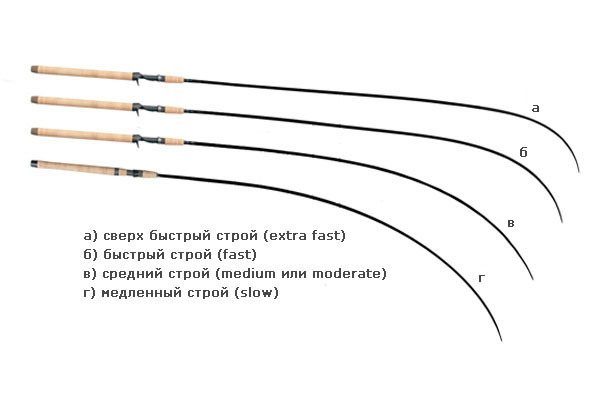
The designation of this parameter can be either in abbreviated or full form.
Casting or testing is another important parameter of a fishing rod. The definition itself means the smallest and largest weight of baits at which the selected fishing rod can be used.
As an example, let’s look at one of the most standard cases, when on the form of a fishing rod you see the inscription 10-30 G. What does this characteristic of a fishing rod mean? The number 10 shows the smallest weight of the bait, tackle (in cases of float fishing, the weight of the float plus sinkers) at which you can successfully fish.
So, if you use baits that weigh less than the specified value, then you will have problems when casting, and when jig fishing, you will not be able to feel your hand touching the bottom with the bait. But you should not rely heavily on the accuracy of the indicated value, but use bait with a reserve, so in this case, it is better to take a bait of at least 13 grams.
Accordingly, 30 shows that the maximum weight of the bait should not exceed 30 grams. Using heavier baits will quickly ruin your rod.
Although it is better to use attachments 3-5 grams less than the specified weight.
In general, the optimal lures will be those that have an average weight, for example, for a rod with a test weight of 10-30 g. It is more effective to take baits weighing 18-22 grams.
Features of light spinning rods
The future fishing device must be chosen correctly; how to choose a spinning rod is of interest to many novice fishing enthusiasts. The question arises about what to choose: ultralight or light spinning rod, what is the difference between ultralight and just light.

Light spinning rods are a universal device for fishing for predators in all weather conditions. Such devices belong to the light class: you need to pay attention to the quality of the gear.
Experienced fishermen advise you to take a closer look at the average price category, because... Cheap gear can discourage you from taking up this hobby. Spinning rods of this class are considered the lightest.
Features of ultralight spinning rod:
- fishing with light bait;
- durable reel.
For a light spinning rod, the weight of the equipment must fit into the range determined by the weight of the bait and the maximum permissible weight of the equipment.
Spinning medium light is designed for bait whose weight ranges from 5 to 25 g.
The lighter the class of spinning rod, the greater sensitivity it has.
Rod length
It is recommended to select a light spinning rod taking into account the conditions of the reservoir. Factors to consider when inspecting a pond:
- how overgrown the shore is;
- Are there trees and bushes nearby?
In deep water, spinners choose longer rods. This rod allows you to make good casts.
The length of the spinning rod for this class is 1.5-3 m. If the reservoir is narrow, then you should not fish with a long fishing rod; the recommended length in this case will be up to 2.1 m.
Test
The test is the weight parameters of the bait, it is indicated by two numbers. The first value is the minimum weight, and the second is the maximum.

The light class is spinning rods, the upper value of which is 15 g. For popular models, the test is 7-5 grams, the form is quite serious if its test value is in the range from 0 to 15 g.
Build
The action characterizes the reaction of the rod to the load. To determine the spinning system, you must perform the following steps:
- secure the tip of the spinning rod;
- holding the handle, move the fishing rod up and down, left and right, with smooth movements.
The fast action spinning rod will begin to bend at the top. This device is suitable for heavy baits. Spinning of this system is considered sensitive and tough.
A medium action rod also bends in the upper half. With their help you can make precise casts, they can withstand jerking loads, they are recommended for beginners.
Slow action spinning rods bend evenly along their entire length. They are suitable for catching large fish.
Manufacturing materials
The material affects the following spinning indicators:
- rod weight;
- strength;
- elasticity;
- cost of the form.
Materials from which light class spinning rods are made:
- fiberglass is a heavy, durable and inexpensive material that is easy to maintain;
- carbon fiber - light, durable and elastic, requires special care after each use;
- Composite materials are strong, inexpensive and resilient.
Spinning rod handle
Material for making the light spinning rod handle:
- Cork is a material that is impervious to water. The front part of the handle is screwed on, the cork is pleasant to the touch and helps to hold the spinning rod securely in your hands. This natural coating helps your hands freeze less.
- Neoprene.
- Combination of cork and neoprene.
Types of equipment for light spinning rods
A reel for a light spinning rod should be inertia-free, small in size 1000-1500-2000 mm, smooth running, with a finely tuned friction brake.
The diameter of the fishing line should be 0.15−0.18mm, and the cord should be 0.04−0.1mm.
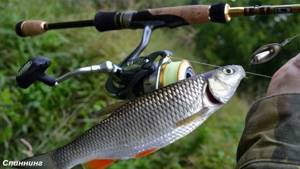
The fittings used should be light and elegant, with high-quality clasp numbers 0 and 00.
Lures used:
- pinwheel with core No. 1, 0 and 00;
- mini-wobbler, wobblers weighing from 2 to 7 g;
- oscillating spoons that are light in weight, 1.5-5 g;
- micro jigs.
Lure test.
Any manufacturer indicates a test for baits, usually in grams. In most cases, this parameter shows a comfortable range of bait weight, but as a rule, the most optimal weight will be the average value (for example, for 6-21g, the optimal bait weight will be 12-14g). Here you should choose a spinning rod that is most suitable for your bait weights.
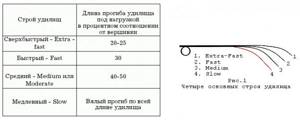
A more detailed choice of test can be found in the material “What is a spinning test”
Line test and power.
Don’t forget about the maximum line test, which reflects the power of the spinning rod. It is usually indicated in Lb (1Lb = 0.45359237 kg).
If you put a cord or fishing line with a higher breaking load than indicated on the spinning rod, then there is a chance of breaking the form under load (in this case, the fishing line is a limiter against breakage). There are also exceptions when the fishing line is specially set with an overestimated test, for example, in places with a large number of hooks where it is often necessary to save expensive baits.
Ultra-Light (UL) – ultra-light spinning rods whose test can start from 0.5g and end at about 5-6g and are suitable for working with thin fishing lines and cords up to 4-5Lb
Light (L) – starts from 0.5-1g and averages up to 8g
Here's what you need to know: Spinning fly reel
Medium-Light (ML) – from 3-5g to 18-20g
Medium (M) – spinning rods from 5-6g to 20-25g, as a rule, the line test does not exceed 16Lb
Heavy (H) – can reach up to 40 – 60g
But you should understand that the power of a spinning rod does not always depend directly on the test. Test and power are different characteristics and may vary between manufacturers.
Spinning line
The fishing line is an important element of spinning tackle; it serves as a connecting link between the bait and the rod. There are three main types of fishing lines used in spinning rods: monofilament, braided fishing line (cords) and fluorocarbon fishing line. Each of these types of fishing line has its own characteristics, advantages and disadvantages.
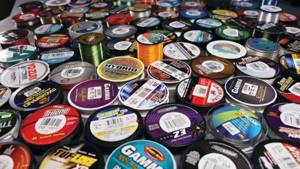
- Monofilaments
are the oldest type of fishing line. Mono lines have a low cost, low visibility in the water, due to their stretchability, they are good at damping fish jerks. The disadvantages of monofilament include low strength and stretchability, due to which they do not provide high sensitivity of the gear. - Braided fishing lines (cords)
do not consist of one fiber, like monofilaments and fluorocarbon fishing lines, but of several fibers woven together. Braided fishing lines are practically inextensible, which ensures full contact with the bait and the highest sensitivity of the gear. Braided fishing lines have high tensile strength, exceeding the strength of all other types of fishing line. With the same diameter, braided fishing line is 3-5 times stronger than monofilament. Braided fishing lines, unlike monofilaments, do not have a memory effect. Without the use of braided lines, it is impossible to imagine such methods of spinning fishing as jig, twitching and jerking. The disadvantages of braided lines are their higher cost, as well as their increased susceptibility to abrasion. - Fluorocarbon lines
have a light refractive index close to that of water, so they are almost completely invisible in water. Another significant advantage of fluorocarbon fishing lines is their high abrasion resistance.
You may be interested in: Spoons
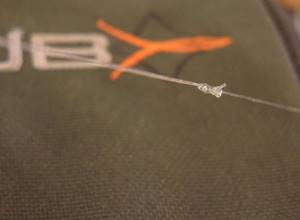
When catching predatory fish that have sharp teeth that can easily cut the fishing line, the fisherman attaches a leash between the main fishing line and the bait. The leash can be made of different materials: metal braided cable, guitar string, fluorocarbon or monofilament. The most common are leashes made of metal braided cable; they can be of different lengths and workmanship; they can be bought at any fishing store. Popular among spinning anglers are leashes made of guitar string or other steel wire with a diameter of 0.18 to 0.40 mm. Many anglers use a piece of fluorocarbon fishing line with a diameter of 0.35 - 0.7 mm for the leash.
Sensitivity.
This parameter is relative and very subjective. Choosing a spinning rod with good sensitivity is another task; it’s not for nothing that every second person on the forums asks about “feeling”.
The high sensitivity of the spinning rod allows you to better feel the bite, work with a light jig, and feel a snag or blade of grass when inserting the wobbler. But here you should understand that sensitivity directly depends on the quality of the form, and this already directly affects the price. The more expensive and technologically advanced the spinning rod, the higher its sensitivity will be.
Price.
Choosing a spinning rod in the right price category is not so difficult. The simplest spinning rods cost from 1000 rubles. up to 2000 rub. You shouldn't expect miracles from them in terms of their qualities.
The optimal choice will be in the average price category of 4000 rubles -7000 rubles. For this money you will get a “workhorse” that will be made of high-quality high-modulus graphite and have good sensitivity, light weight and good fittings. The difference in quality will be very different from budget models.
More expensive spinning rods (from 10,000 rubles) are already more aimed at professionals and athletes. The difference between them is no longer so great and not every fisherman will be able to see it.
How much to pay for a spinning rod is a personal choice and there cannot be any explicit advice here.
Rating of the best manufacturers
Beginning fishermen and amateurs prefer cheaper gear, while professional fishermen do not skimp on buying expensive spinning rods. Undoubtedly, the characteristics of the spinning rod, ease of use, and durability depend on the cost of the gear; however, choosing gear based solely on cost is not always advisable.
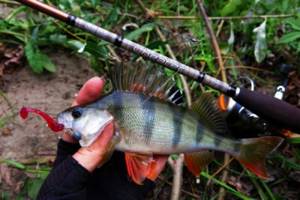
The market offers products from many brands engaged in the production of fishing goods, among which some manufacturers stand out. For example, products from brands such as G. Loomis, Shimano, Lamiglas and some others are very popular among experienced fishermen and athletes. The light spinning rods of these brands are made of high-quality materials, so they will serve their owner for many years.
Those who like to relax in nature and just go fishing recommend purchasing gear from manufacturers in the mid-price range. They recommend avoiding Chinese spinning rods, since their quality leaves much to be desired and often does not justify their cost. Spinning rods from brands such as NordicStage, Daiwa and Salmo have received many positive reviews. Their spinning rods belong to the middle price category and have excellent quality and durability. Those who want to save money can turn their attention to the products of the Russian manufacturer of goods for fishermen, Flagman. The products of this brand meet all modern standards and realities, and have excellent quality for little money. The average cost of a good domestically produced spinning rod is about six thousand rubles. And if cost is not the main thing for you, then pay attention to spinning rods from Korean and Japanese manufacturers. They have collected quite a lot of high reviews from professional fishermen.

Rod parameters and their characteristics, depending on the material of manufacture
Forms from well-known manufacturers, as a rule, are marked with the material from which it is made:
- FIBERGLASS. These rods are made of fiberglass. This is the heaviest, but durable and inexpensive material used in the production of modern spinning rods.
- GRAPHITE. These forms are made from carbon fiber. This is the lightest, most durable, but much more expensive material.
- COMPOSITE. This means that this blank is made on the basis of a composite material that combines the advantages of the two above materials, but they are not as light as carbon fiber blanks and belong to the middle price category.
Gone is the era of bamboo poles, now the angler is given a choice of blanks made of fiberglass composite or plastic, and each of them has its own disadvantages and advantages.
Fiberglass fishing rods are very popular among fishermen, since the cost of such fishing rods is relatively low, and they do not require special care during operation. Since their strength is almost not affected by microcracks that they receive during transportation.
And here's what you need to know: A catchable lure for perch in winter
Important parameters of such fishing rods are their good flexibility and ability to withstand heavy loads. Unfortunately, this comes at the expense of sensitivity, and they also weigh more compared to similar sized carbon fiber and composite rods.
Carbon (graphite, carbon fiber) fishing rods are marked Carbon. It is believed that fishing rods made from this material are more modern and better suited for professional fishing. The quality characteristics of the rod are its lightness, fairly high sensitivity and good strength.
Carbon fishing rods differ depending on the graphite content module, which has values in the range IM-1 - IM-10 (there are fishing rods with other indicators, for example GL2, IMX); the marking of the graphite module must be presented on the form.
Rods with a low modulus of graphite content 1,2,3,4 are not so fragile, quite strong, soft and elastic, but they are significantly inferior when a sharp hook is needed. But rods that have a high modulus index are more rigid and sensitive, and they are good to use for casting over long distances, as well as for fishing at dusk, since you can feel the movement of the bait with your hand.
True, when using them, you should take care of the safety of the rod: transport it in a tube and avoid hitting rocks. It is also worth remembering that the rod conducts current, so it is better not to pick it up during a thunderstorm, and you should be careful near live parts of the machine and electrical wires.
The quality parameters of a rod made of bi-spiral carbon are very high; these blanks have good strength and ductility, without losing sensitivity.
relative affordability compared to carbon rods;
good casting range;
moderate hardness and good strength.
What is a class medium
The medium class includes rods that, when loaded, bend by more than a third of their length. This feature allows you to cast over long distances and carefully retrieve careful trophies. The medium class includes a subcategory Medium-light with durable forms for hunting asp, perch, pike with baits weighing from 5 grams to 20 grams. They are able to quickly hook prey and are suitable for fishing from a boat and from the shore.
The Medium-heavy subcategory consists of heavy rods aimed at guiding large active predators. Models are used on spacious rivers with fast currents, for fishing at a decent depth. They are equipped with reels with fishing lines or cords with a cross-section of 2.5 to 3.5 millimeters. The weight of the bait reaches 40 grams. These are spinning rods with a decent power reserve that work well with silicone, wobblers, oscillating and rotating spoons.
Forums and consultants in the store.
Specialized forums can help you a lot when choosing a spinning rod. As a rule, people are very willing to share their impressions of models and manufacturers. Before going to the store, you can read reviews and select specific models for yourself in advance in order to better navigate them.
Directly in the store itself, you can ask a consultant to help you choose a spinning rod to suit your conditions. Be sure to select 2-3 models, put them side by side and compare. Whichever one “fits your fancy” best, we’ll take it! But don’t forget that the consultant has a commercial benefit from selling more expensive spinning rods and it’s not always worth going for it.
You can read about the models I fish with and why I chose them in this article Major Craft spinning rods.
This article describes what the author considers when choosing gear. How do you choose? Share your experience in the comments.
Happy fishing everyone! Thank you.
Budget spinning rod of the Medium Light class.
Spinning. Tackle: all notes, author's notes.
Budget spinning rod of the Medium Light class. To be honest, I myself don’t have a very good attitude towards spinning rod models that say IM9 and cost less than 2000 rubles. It’s just that sometimes the inscription im9 on a spinning rod that costs, for example, 800 rubles makes me smile. We will talk about the Mikado stick, I want to say right away that somehow things didn’t work out right away with this manufacturer, I broke one stick from this company myself, the second one was capricious with its rings - I had to rearrange a couple of pieces... But with the Mikado Silver Eagle IM9 270 spinning rod the test was 5- 20. A directly proportional picture emerged.
I came across this spinning rod by accident - a friend asked me to pick up a budget stick for a jig in a store, I didn’t find anything particularly worthy on the store counter, but my eye fell on this model, in principle it suited our conditions, and the action could be determined , despite what is written on the form. This is nothing more than extra fast. Just the thing for the picky pike-perch bite in our reservoirs. Of course, I didn’t expect particularly good performance from it - the price did not exceed 1,200 rubles. But the friend took this stick anyway. When on my next fishing trip with a friend, I asked him to let me test the new spin for an hour, I was very pleasantly surprised. Both the sensitivity of the gear and the sending power...
The jig, with its spinning rod, flew at least 10 meters further than with my medium-fast stick... By the way, the lengths of the spinning rods are the same, as are the weights of the cheburahs we were fishing with then... And the reels weren’t much different either, the cord is Power Pro 015 I have what he has - so the only difference was the sticks. But this is not even the main thing - the spinning rod hits your hand every time you fall, as if it costs no less than 2-3 thousand rubles. Of course, the manufacturer achieved this due to the action, but the bites of the pike perch - and that day it was especially sluggish - were transmitted clearly to the hand.
Useful video
In the video below you will learn what some terms and symbols on spinning rods and reels mean, as well as the correspondence tables “stick power designation - test range”, “power - reel size” and “stick power - cord number in Japanese. classification".
In conclusion, we note that professional fishing rods may be marked with information about other properties of the rod (rings, type of joint of the knees, etc.), but for most anglers, when choosing a spinning rod, it is enough to know the basic parameters of the form, about which we mentioned here.
